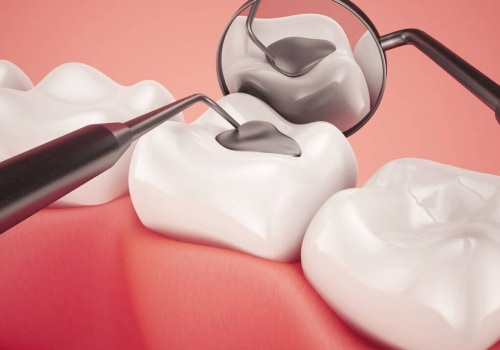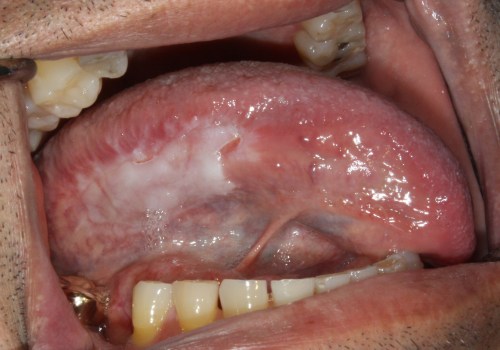Do you want to learn more about dental implants and bridges? Are you looking for information on how to get these treatments, and what their advantages and disadvantages are? Whether you are looking for a permanent solution to replace missing teeth, or just a temporary fix, this article has everything you need to know about dental implants and bridges. From the different types of treatments available, to the potential risks associated with them, this guide provides an in-depth look at this popular oral health treatment. So, read on for more information about dental implants and bridges, and find out if they are the right choice for you.
Dental Implants and Bridges
are popular treatments for improving oral health. They can help restore lost teeth, prevent jawbone deterioration, and improve the overall look of your smile.This article will explain the different types of dental implants and bridges, their benefits, and the cost associated with each type of treatment.
What are Dental Implants and Bridges?
Dental implants are metal posts or frames that are surgically placed into the jawbone. They act as a permanent replacement for missing teeth, providing a secure foundation for artificial teeth such as crowns, bridges, or dentures. Dental bridges are false teeth that are attached to adjacent natural teeth on either side of a gap in your smile.They are typically made of porcelain or metal and provide a permanent replacement for missing teeth.
Types of Dental Implants and Bridges
There are several types of dental implants and bridges available. The type of implant or bridge you receive depends on the size and shape of your jawbone, the number of missing teeth, and other factors. Some of the most common types include:- Endosteal Dental Implants: These are the most common type of implant and involve surgically implanting a metal post into the jawbone.
- Subperiosteal Dental Implants: These implants involve surgically placing a metal frame onto the jawbone and then attaching artificial teeth to it.
- Cantilever Bridges: This type of bridge is typically used when there is only one natural tooth adjacent to the gap in your smile. The bridge is anchored to the one existing tooth.
- Maryland Bridges: This type of bridge is similar to a cantilever bridge but involves bonding artificial teeth to the backs of adjacent natural teeth.
Benefits of Dental Implants and Bridges
Dental implants and bridges can provide many benefits to patients with missing teeth, including:- Improved Oral Health: Dental implants provide a secure foundation for artificial teeth, which helps prevent decay and gum disease.
- Restored Lost Teeth: Dental implants and bridges can restore the appearance of your smile by replacing missing teeth.
- Prevent Jawbone Deterioration: When you lose a tooth, your jawbone begins to deteriorate due to lack of stimulation.
Dental implants provide stimulation to your jawbone, helping to prevent further deterioration.
Risks Associated with Dental Implants and Bridges
Although dental implants and bridges can provide many benefits, there are also some risks associated with these treatments. Some of these risks include:- Infection: Infection can occur at the site where the implant was placed if proper care isn’t taken during or after the procedure.
- Nerve Damage: Nerve damage can occur if the implant is placed too close to a nerve in the mouth.
- Rejection: The body may reject the implant if it’s not made from materials that are compatible with your body.
- Fracture: If not placed properly, dental implants can become loose or fracture.
Cost of Dental Implants and Bridges
The cost of dental implants and bridges will vary depending on the type of procedure being performed, the complexity of the case, and other factors. Generally speaking, dental implants tend to be more expensive than bridges. Depending on your insurance coverage, you may be able to get some or all of the cost covered.It’s important to speak with your dentist or insurance provider to determine what costs you’ll be responsible for.
Finding a Dentist Who Specializes in Dental Implants and Bridges
If you’re considering dental implants or bridges, it’s important to find a dentist who specializes in these treatments. Your dentist should be able to evaluate your case and determine which treatment is best for you. They should also have experience performing these types of procedures so you can rest assured that you’re in good hands.Types of Dental Bridges
Traditional Bridges are the most common type of dental bridge and are composed of two crowns that are attached to two adjacent teeth.This type of bridge is held in place by the two anchoring teeth. Traditional bridges are typically made from porcelain or ceramic material and can last between 5-15 years with proper care.
Cantilever Bridges
are used when there is only one adjacent tooth available for support. This type of bridge consists of one or more artificial teeth that are attached to a single anchoring tooth. Cantilever bridges are usually used for back teeth, as the force exerted on the anchoring tooth is less than with a traditional bridge.This type of bridge typically lasts 5-7 years with proper care. Both traditional and cantilever bridges have their own benefits and drawbacks. Traditional bridges are more secure and can last longer, but they require two adjacent teeth for support. Cantilever bridges can be used in cases where only one adjacent tooth is available, but they may not last as long as traditional bridges.
Types of Dental Implants
Dental implants are an increasingly popular choice for improving oral health. There are two main types of dental implants: endosteal and subperiosteal.Endosteal ImplantsEndosteal implants are the most common type of dental implant, and are typically made of titanium. They are surgically inserted into the jawbone, where they act as a replacement root for the tooth. Endosteal implants are a long-term solution and can last for many years if cared for properly. They provide a secure and stable foundation for the replacement teeth, allowing for normal functioning.
However, they require healthy bone tissue in order to be successful, and may require additional surgeries or procedures if the bone is not suitable.
Subperiosteal Implants
Subperiosteal implants are also made of titanium, but are placed beneath the gum tissue instead of into the jawbone. They consist of a metal framework that is fitted onto the jawbone, and the replacement teeth are attached to it. Subperiosteal implants are typically used in patients who have limited bone tissue or who do not want to undergo surgery.They can provide a stable foundation for the replacement teeth and can last for many years. Both endosteal and subperiosteal implants have their own advantages and disadvantages. Endosteal implants provide a stronger foundation for the replacement teeth, while subperiosteal implants require less surgery and allow patients with limited bone tissue to benefit from dental implants. However, endosteal implants require healthy bone tissue, while subperiosteal implants may not be as strong or secure as their endosteal counterparts. The cost of each type of implant will vary depending on the individual case. Dental implants and bridges are important treatments for improving oral health because they can help to restore the natural look and function of your teeth.
There are several types of dental implants and bridges available, each with its own benefits and costs. Dental implants can provide a durable and long-lasting restoration, while bridges are usually more affordable and a good option for replacing one or more missing teeth. It is important to talk to a dentist to find out which option is best for you. You should also make sure to find a dentist who specializes in these treatments so that you can have the best possible results.






